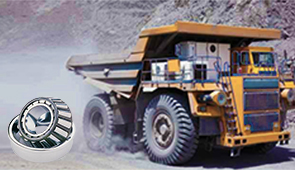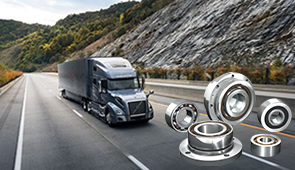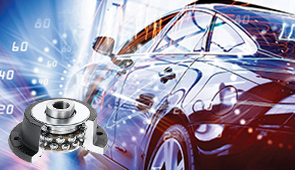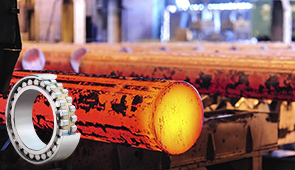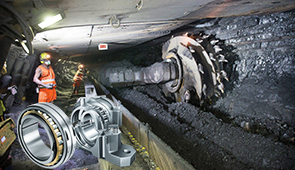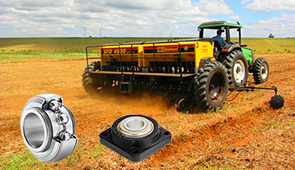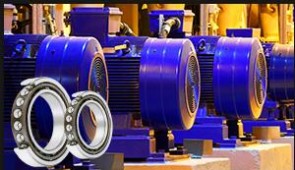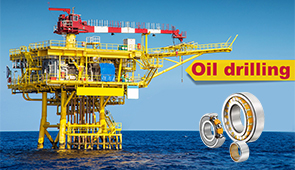Ultimate Guide to Bearing Seals: Protecting Your Wheel Bearings
Wheel bearings are a critical component of any vehicle’s drivetrain, ensuring smooth and efficient rotation of the wheels. However, their performance and longevity largely depend on adequate protection from environmental contaminants, moisture, and debris—this is where bearing seals come into play. Bearing seals act as a vital barrier, safeguarding the delicate components of the wheel bearings against damage and wear. This guide explores the essential role of bearing seals, the types of sealing technologies available, their advantages, and key considerations for proper maintenance and selection. By understanding the mechanics and importance of bearing seals, you’ll be equipped to make informed decisions that enhance the reliability and durability of your vehicle’s wheel bearings.
How do grease seals work in ball bearings?
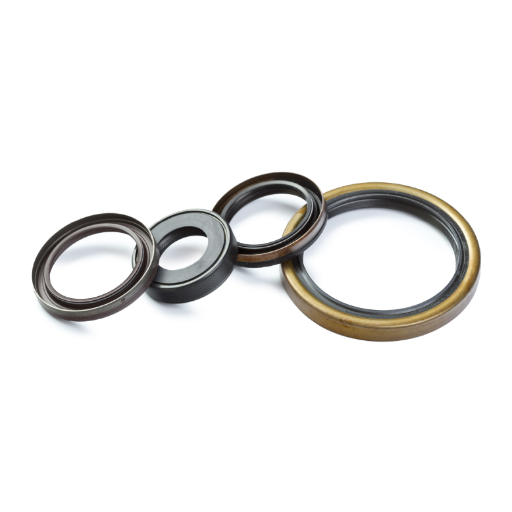
The function of grease seals in retaining lubricants
Grease seals in ball bearings serve two functions: retaining the lubricants within space while blocking contaminants like dirt, water, and debris from entering the bearing assembly. For this reason, these seals are constructed from materials like rubber or polymer which are flexible and can maintain a seal under operating conditions.
- Seal Material Composition: High operating temperature rubber such as Nitrile or Viton is used for applications needing long-lasting service above -40°F and under 300°F (-40°C to 150°C).
- Seal Design Type: Common designs include single-lip or double-lip configurations, where double-lip seals offer superior protection by handling both lubricant retention and contaminant exclusion.
- Shaft Surface Finish: Recommended shaft surface roughness ranges from 0.2 to 0.8 microns Ra to ensure a seal is maintained with minimal wear.
- Operating Speed and Pressure: Suitable self-sealing units are designed for specific RPM limits and pressure ratings, like standard seals with support speeds over 10,000 RPM and pressures of 10 psi.
Understanding these factors ensures that grease seals are matched appropriately to the application requirements, enhancing both the performance and longevity of the ball bearings.
Understanding 2RS bearings and their sealing mechanism
The 2RS bearings come with robust and effective sealing that covers the inner and outer faces– to retain lubricant and prevent contamination, ideal for demanding applications. Lubricating seals are usually molded in rubber or polymer and are positioned very near the inner face of the bearing. Furthermore, the grease oozing from the seal while preventing dust, water, and other foreign elements from entering is considerably low. Moreover, the 2RS bearings perform quite well under less frequent maintenance and moderate to harsh operating conditions.
- Sealing Material: For effective sealing and durability, rubber or polymer seals work well in varied environments.
- RPM Limit: Open bearings have a higher speed rating than sealed bearings. But by less speed depends on size and design.
- Temperature Range: Each seal material has its operating temperature which means the standard 2RS seal can endure -30°C to 110°C.
- Lubrication Retention: Without re-greasing the bearings continuously, factory-preserved lubrication can guarantee long-term performance.
These features integrated into one design can ensure reliability, efficiency, and minimal risk of external contamination or premature wear for industrial and general-use catering purposes.
What are the benefits of using sealed bearings?
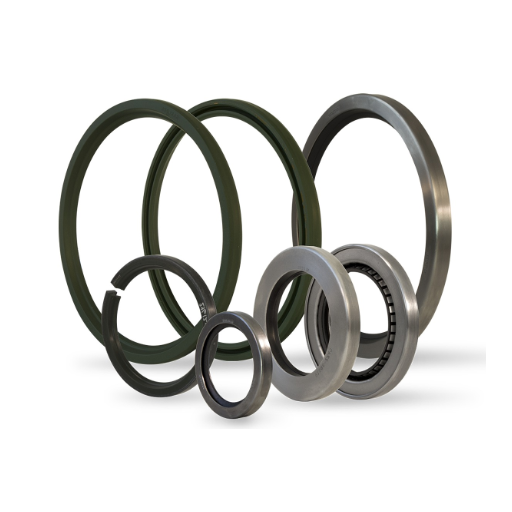
Increased bearing life and performance
Employing sealed bearings enhances bearing longevity as well as performance by substantially preventing the ingress of dust, dirt, and moisture, which are the main culprits of wear and failure.
- Sealing Mechanism: The 2RS seals form a protective barrier against harmful external agents, safeguarding internal components and ensuring they function correctly for extended periods.
- Temperature Range: The bearings are designed to perform optimally within the value set range of -30 °C to 110 °C. Most bearings have problems performing well in extreme operating conditions.
- Lubrication Retention: Sealed bearings reduce maintenance frequency and retain factory-applied lubricants, which do not require replacement under load conditions.
These sealed bearings are the most durable type of bearing and can withstand extreme mechanical and environmental stressing conditions.
Reduced maintenance requirements
Sealed bearings within mechanical systems greatly lessen maintenance work as periodic inspection and lubrication are rendered unnecessary. The seal contains factory-applied lubricant which never requires replacement while assuring perfect operation under load conditions. This design also greatly reduces contamination from external particulate matter like dust or moisture which could otherwise impede operation or damage the components.
- Operating Temperature Range: -30 °C to 110 °C, providing maximum system reliability under varying thermal conditions.
- Lubricant Longevity: Factory-sealed lubrication optimized for the bearing’s lifespan throughout standard operational loads.
- Environmental Protection: Enhanced seals to eliminate penetration of other contaminants, preserving effective operation.
Operators that incorporate sealed bearing technology into their systems can improve system durability, and longevity, and minimize total downtime which enhances cost efficiency. Those sealed bearings are the best choice for systems that require low maintenance, instant readiness, and high reliability.
How to choose the right seal for your bearing application?
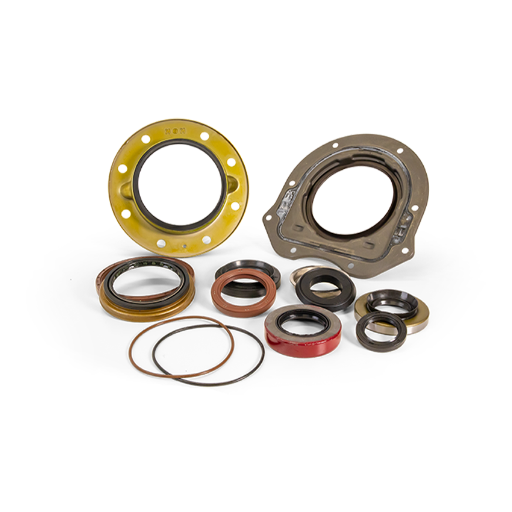
Factors to consider when selecting bearing seals
In the process of choosing bearing seals, I make sure to evaluate various important factors that would help in fulfilling the application requirements while ensuring that the system performs well and lasts longer:
- Operating Environment: I assess the risk of intrusion from contaminants like dust, dirt, or liquids. In situations where the environment is heavily contaminated, I recommend using contact seals which prevent ingress very efficiently.
- Temperature Range: Seals must withstand the application’s temperature spectrum. For high-temperature settings, I often choose seals made from materials such as Viton or silicone, as they offer superior heat resistance (up to approximately 200°C). For lower temperatures, nitrile rubber or polyurethane may suffice.
- Rotational Speed: The construction and composition of the seal must suit the rotational speed of the bearing. Some examples of this include lip seals which work well for medium speeds, and labyrinth seals which are more favorable for higher speeds as they have less friction.
- Lubrication Type: The seal must be able to work jointly with the selected lubricant, oil, or grease. Seals need to resist destruction when they come into contact with the direct lubricant while keeping their structure intact.
- Differential Pressure: When the internal or external pressures are quite high, I normally choose seals with pressure ratings. It is important to note the maximum allowable pressure for standard seals which is typically 5 psi, and higher for custom designs.
- Seal Material Compatibility: I make sure the seal material is compatible with adjacent components, especially concerning chemicals. Fluorinated or PTFE seals are recommended for very aggressive environments.
By analyzing their justifications, I can select a seal design that aligns with the operational requirements, ensuring optimal performance and durability. Proper selection minimizes maintenance needs and enhances system efficiency in the long term.
Matching seal type to specific operating conditions
To properly select seal types to the specified operating conditions, I first consider the pressure along with temperature and whether the various mediums will be compatible. For example:
- Pressure: The seal should enable maximum operating pressure of the system. Standard O-rings, for example, can accommodate up to 5 psi, while custom high-pressure seals can surpass this value, as is common in many hydraulic systems where 10,000 psi is the norm. The reliability of seals is increased when they are selected under the assumption that the pressure will exceed the normal operating conditions.
- Temperature: Material selection is determined through the temperature range of the system. There are specifications on nitrile rubber that are functional in temperatures ranging between -40°F to 250°F whereas silicone is good for up to 400°F. When the environments are harsh, seals made of fluorocarbon (Viton) or perfluoro elastomer which can withstand up to 600°F are ideal.
- Chemical Compatibility: The exposure to different chemicals has to be analyzed first. For aggressive solvents, hydrocarbons or feats elastomers made from fluorinated or PTFE materials will do since they resist the degrading effects of certain chemicals. As materials are being researched, data sheets should be checked for the relevant applications.
A seal’s specifications now need to be brought in line with the system requirements so that the seal can do its intended function for as long as possible. This methodical way of selecting seals ensures that the exact seal needed is captured and ensures that there is maximum performance given the wide range of operating conditions commonplace in modern systems. These actions also enhance efficiency and lessen the chances of failure.
What are common problems with bearing seals and how to solve them?
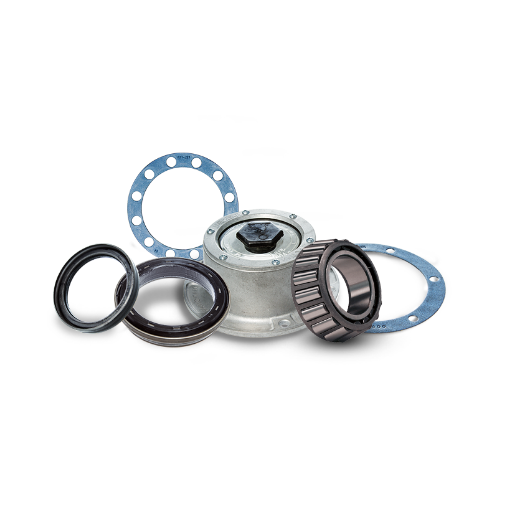
Identifying seal wear and damage
A visual inspection alongside an analysis of the operating conditions of a seal’s performance helps in detecting seal wear and seal damage. Seal material cracking, tearing and abrasion are the primary signs I look for. Potential seal failures can also be detected by looking in the system for excessive leakage, increased friction, or noise.
- Operating temperature: The specified temperature range of some fluoro elastomers (-40 degrees Fahrenheit to 400 degrees Fahrenheit) can lead to degradation and hardening over time if exceeded.
- Chemical compatibility: Misalignment of the seal material and the media it contacts can also cause breakdown and swelling.
- Pressure ratings: Certain hydraulic seals with a maximum tolerance of around 1,000 psi can easily deform or extrude when system pressure exceeds the seal.
- Surface roughness: Unrecommended surface finishes on the shaft, like roughness values beyond Ra 0.2-0.8 µm, can be detrimental and accelerate wear.
Mitigating unexpected downtime from seal failure and ensuring optimal system performance can be achieved by regularly inspecting seals, and ensuring these factors are systematically evaluated.
Proper installation techniques for bearing seals
- Cleanliness: I clean the shaft and housing thoroughly to ensure that no contamination occurs. Seal performance can be compromised by as small a contaminant as debris which can cause uneven contact or abrasion.
- Lubrication: Before installing the seal on the mating parts, I apply a suitable lubricant on the seal and tangential surfaces. This ensures that friction at the time of placement, and the initial operational period, is minimized and no damage is sustained. For instance, light grease or oil that is soluble in the seal material and bearing environment is often used.
- Axial alignment: To ensure that there is no unusual seal wear due to unbalanced force, I check for the axial alignment of the shaft and housing. Most applications look to avoid excessive wear, so a standard no greater than 0.03° for all other applications is typically kept.
- Insertion method: Using a proper insertion tool, I press the seal into the seat with a small amount of force which decreases the risk of damage to the seal lip or housing. To prevent uneven application of pressure, a press-fitting tool that has a matching outer diameter with the seal is employed.
- Checking the Installation: Ultimately, I can attest that the seal is properly fully seated and flush with the housing. Gaps that are not even may lead to the leakage of fluids or the inflow of foreign particles, jeopardizing system dependability.
This approach and double-checking everything assures me that the system is functioning properly and meets the specified operations for maximum effectiveness and availability.
How to maintain and replace bearing seals?
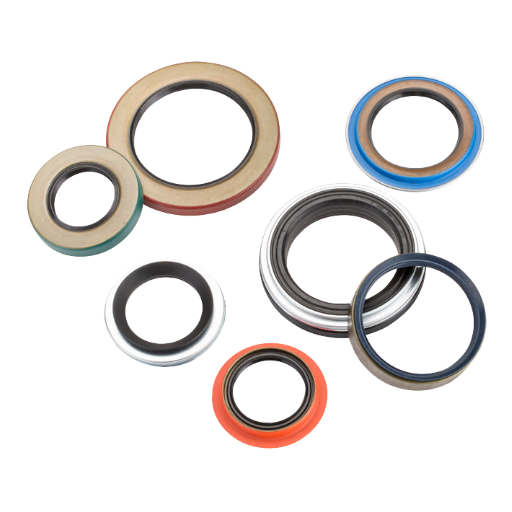
Regular inspection and cleaning procedures
Seal maintenance and replacement is a process with predefined steps focused on achieving the utmost effectiveness and durability. Bearing seals are the primary focus seals for these steps:
- Inspection Frequency: Inspections include both visual and tactile diagnosis and are based on the operational environment. Inspections for standard industrial application systems are performed Bi-Annually and for highly contaminated systems, every month. Purposely extreme conditions systems are inspected every 6 months.
- Visual Examination: Each inspection is carefully checked for cracks, deformation, and any other forms of wear and tear. Degrading seals that show signs of erratic wearing must be disposed of at the earliest opportunity.
- Alcohol-free Lint-less cloths and isopropyl Alcohol-free solvents are the tools of choice for cleaning the seals. Though one has to be extra careful when cleaning rubber-composed seals, carelessly weaning them might break the case or housing seal. Nonaggressive cleaning agents work best for resilient elastomers.
- Integrity of Lubrication: Decontamination and degeneration seals must be checked with new oil and specified grease. The lubricant in one place must have very specific lubricative properties relative to temperature. Compromised seals can Viscosity and clarity be proved bad.
At every stage, the bearings seals are cleaned and visually/ tactile confirmed damaged to prevent issues from manifesting. The reason these procedures are enforced is that it guarantee maintenance of the reliability and performance of the systems.
Steps for replacing worn or damaged seals
- Gather Required Tools and Materials: Before proceeding, I collect the required tools like a seal puller, torque wrench, Gloves, and the recommended sealant or lubricant. Moreover, I check that the replacement seal is in spec with the original ones like its inner diameter, outer diameter, outer material compatibility, and so on.
- System Power Down And Check-Up: To maintain safety, the system is disconnected from all power sources, and any operational pressure is released. Moreover, it undergoes a visual and touch test to determine the level of wear and damage on the seal components and their surroundings.
- Seal Excision: I remove the worn-out or broken seal using the seal puller or any other relevant extraction device. Precaution is maintained so that the housing or shaft does not get scratched. Further cleaned using a nonscraper or oil solvent to remove older sealant and other adhesive residues.
- Inspection Of Galvanizing Surfaces: Next, I check the grooves, rust, or material decay of the seal housing as well as the shaft. If the noted irregularities on the Technical manual are beyond tolerable limits, then the mentioned components might need adjustment or substitution the ensure proper sealing to be installed.
- Verification of Torque and Concluding Step: When fasteners are present, I tighten them to the specified values provided by the manufacturer, such as the Nm figures in the service manual, so that proper load distribution takes place. Afterward, the system is checked visually for proper alignment and positioning of the seal.
- Executing a System Test: After completing the reassembly, I revert the working conditions to normal and carry out a pressure or functional test. In this phase, I look for leakage problems, misalignment, and unusual sounds, which indicates that the changeover has been successful.
Ensuring that the seal is replaced most reliably and effectively pas ossible requires adherence to the technical requirements provided by the seal manufacturer during the initial stages as well as during final tests.
Frequently Asked Questions (FAQs)
Q: What are bearing seals and what is their primary function?
A: Bearing seals are components primarily used in bearings and machinery to prevent contaminants from entering the bearing area and to retain lubricants within the bearing. They create a barrier between the moving parts and the external environment, ensuring the longevity and efficiency of the bearing.
Q: What types of bearing seals are commonly used?
A: The two main types of bearing seals are rubber seals and metal shields. Rubber seals are flexible and provide excellent sealing properties, while metal shields offer durability and low friction. Some bearings use a combination of both types for optimal protection.
Q: How do rubber seals protect wheel bearings?
A: Rubber seals are designed to create a tight seal in contact with the inner bearing ring. They effectively prevent contaminants like dust, water, and debris from entering the bearing area while also keeping the lubricant within the bearing. This protection helps maintain the bearing’s performance and extends its lifespan.
Q: What are the advantages of non-contact seals in bearing assemblies?
A: Non-contact seals offer the benefit of reduced friction compared to contact seals. They are designed to create a narrow gap between the seal and the bearing ring, which helps to keep particles away from the bearing while allowing for smoother rotation and lower operating temperatures.
Q: How do bearing seals impact the overall performance of wheel bearings?
A: Bearing seals play a crucial role in maintaining the performance of wheel bearings by preventing contaminants from entering the bearing area and retaining lubricants within the bearing. This protection helps reduce wear, minimize friction, and extend the overall lifespan of the bearing, resulting in improved efficiency and reliability.
Q: Can bearing seals be replaced, and how often should they be inspected?
A: Yes, bearing seals can be replaced. It’s recommended to inspect them during routine maintenance or when servicing the wheel bearings. The frequency of inspection depends on the vehicle’s usage and operating conditions, but generally, they should be checked at least once a year or every 12,000 miles.
Q: How are seals indicated in bearing designations?
A: Manufacturers often include seals in their bearing designations using specific codes. For example, a suffix like “2RS” might indicate that the bearing has rubber seals on both sides, while “ZZ” could represent metal shields on both sides. It’s important to consult the manufacturer’s specifications to understand the exact type of seal used in a particular bearing.
Q: What factors should be considered when choosing the right type of seal for a bearing?
A: When selecting a seal for a bearing, consider factors such as operating temperature, speed, environmental conditions, and the type of lubricant used. The seal material should be compatible with the lubricant and able to withstand the operating conditions. Additionally, consider whether a contact or non-contact seal is more suitable for the specific application.
UCTH213-40J-300 with Setscrew(inch)
CNSORDERNO: Normal-duty(2)
TOGN: UCTH213-40J-300
SDI: B-R1/8
SD: 2 1/2
UCTH212-39J-300 with Setscrew(inch)
CNSORDERNO: Normal-duty(2)
TOGN: UCTH212-39J-300
SDI: B-R1/8
SD: 2 7/16
UCTH212-38J-300 with Setscrew(inch)
CNSORDERNO: Normal-duty(2)
TOGN: UCTH212-38J-300
SDI: B-R1/8
SD: 2 3/8
UCTH212-36J-300 with Setscrew(inch)
CNSORDERNO: Normal-duty(2)
TOGN: UCTH212-36J-300
SDI: B-R1/8
SD: 2 1/4
UCTH211-35J-300 with Setscrew(inch)
CNSORDERNO: Normal-duty(2)
TOGN: UCTH211-35J-300
SDI: B-R1/8
SD: 2 3/16
UCTH211-34J-300 with Setscrew(inch)
CNSORDERNO: Normal-duty(2)
TOGN: UCTH211-34J-300
SDI: B-R1/8
SD: 2 1/8









